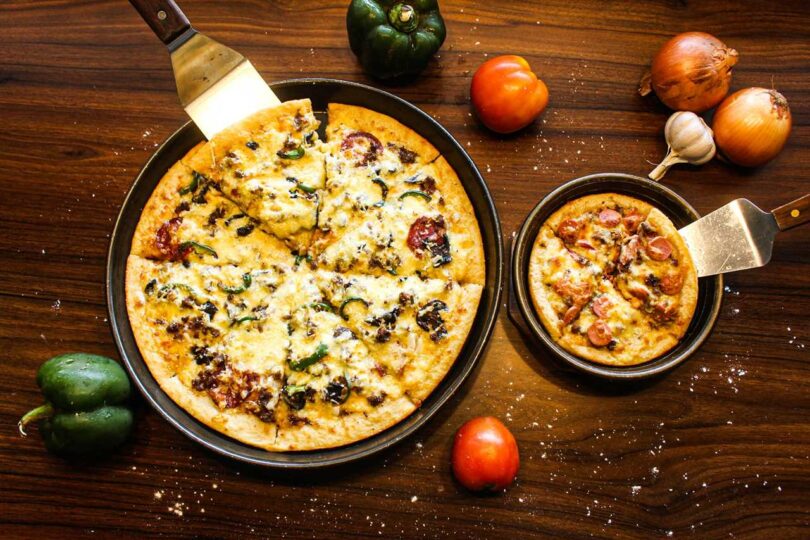Are you ready to embark on a culinary journey to Italy without leaving your kitchen? Look no further, because this step-by-step guide to making authentic Italian pizza will transport your taste buds to the streets of Naples.
Get ready to create the perfect thin and crispy crust, topped with mouthwatering ingredients that will make your heart sing. With a little bit of passion, knowledge, and attention to detail, you’ll be serving up homemade pizzas that rival those from your favorite pizzeria.
So roll up your sleeves, grab your apron, and let’s dive into the world of Italian pizza-making.
Key Takeaways
- The key to preparing authentic Italian pizza lies in dough preparation and shaping, focusing on proofing the dough and mastering kneading techniques.
- Choose the right sauce and toppings to enhance flavor and create unique combinations, considering variations like classic tomato sauce, pesto sauce, white sauce, barbecue sauce, and Alfredo sauce.
- Explore different pizza variations, such as Pizza Bianca with a base of olive oil, rosemary, and salt, or the classic Margherita pizza with a thin and crispy base topped with tomato sauce, mozzarella cheese, and basil.
- Utilize baking techniques like preheating the oven, using a pizza stone or baking steel, and rotating the pizza halfway through baking for even cooking. Serve and enjoy the homemade pizza with family and friends, pairing it with a side salad or antipasto and a selection of Italian wines or craft beers.
Pizza Dough Preparation
He mixes warm water, yeast, and olive oil to prepare the pizza dough. This crucial step sets the foundation for a delicious and authentic pizza.
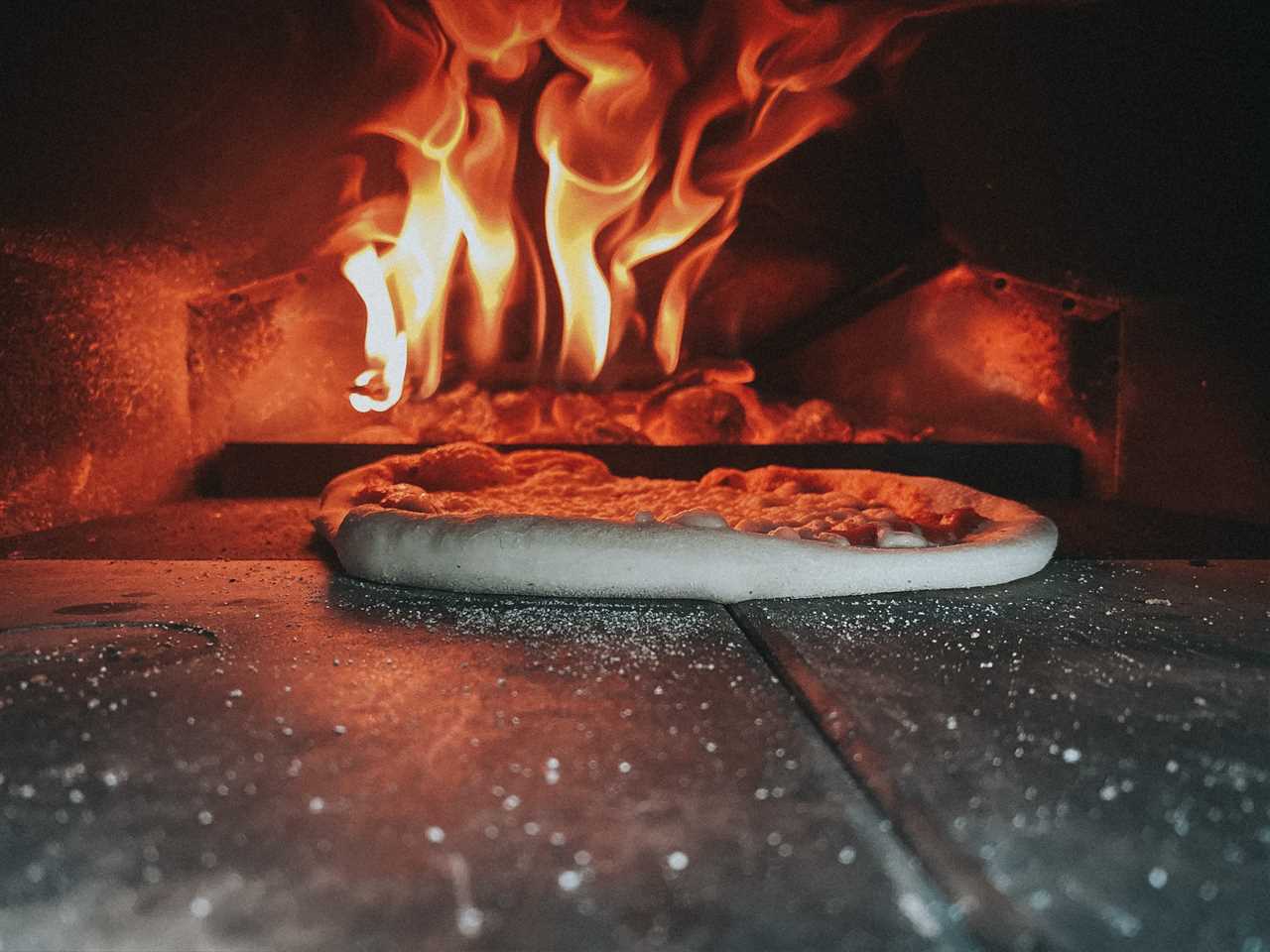
After combining these ingredients, he lets the dough rest and rise, a process known as proofing. This allows the yeast to activate, creating a light and airy texture.
As the dough proofs, he focuses on the kneading techniques, using his hands to work the dough until it becomes smooth and elastic. This not only develops the gluten in the flour but also ensures a consistent texture throughout the pizza.
The act of kneading is not just a physical process; it is a labor of love that connects the maker to the pizza, infusing it with passion and dedication.
Proofing the dough and mastering the art of kneading are essential steps in achieving the freedom to create the perfect pizza.
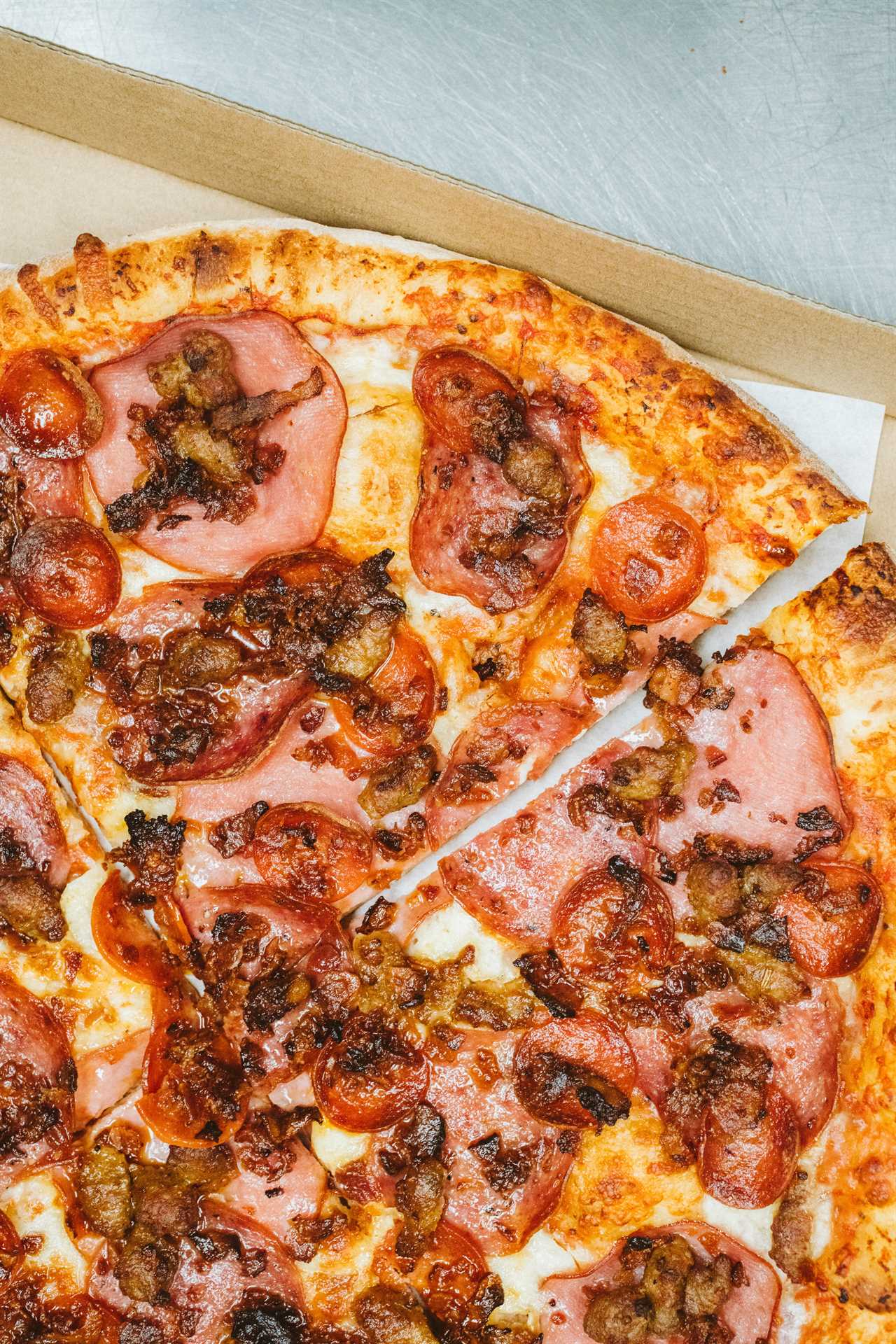
Shaping the Pizza Bases
To shape the pizza bases, the cook should form the dough balls by hand, avoiding a rolling pin. This traditional technique is essential for creating a crispy pizza crust that embodies the true spirit of authentic Italian pizza.
By using their hands, the cook can carefully shape the dough, preserving its aerated texture and ensuring a thin and even base for the pizza. This hands-on approach allows for a greater sense of freedom and creativity in the kitchen, as the cook can adjust the shape and thickness of the base to their preference.
The result is a beautifully crispy crust that perfectly complements the delicious toppings. By embracing these pizza base shaping techniques, one can truly experience the joy and artistry of making authentic Italian pizza.
Quick Pizza Tomato Sauce
The cook slices garlic and cooks it in extra virgin olive oil to create a flavorful tomato sauce for the pizza. Using fresh ingredients for the sauce is of utmost importance in creating a truly delicious pizza.
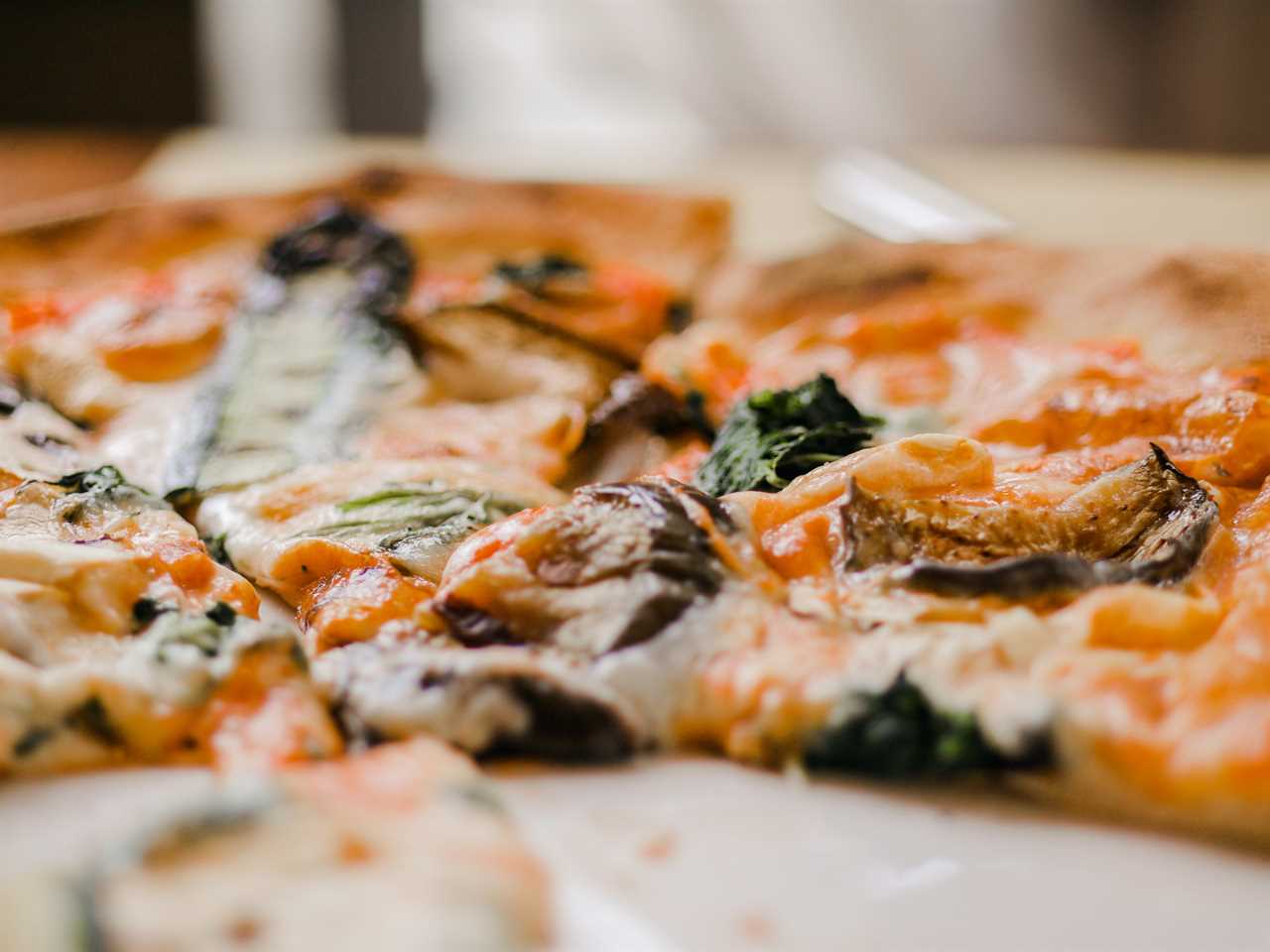
Different types of pizza sauces can be used to enhance the flavor and create unique combinations. Here are five variations to consider:
-
Classic Tomato Sauce: Made with garlic, olive oil, tomatoes, salt, and basil, this sauce is the foundation for the traditional Margherita pizza.
-
Pesto Sauce: A vibrant and aromatic sauce made with fresh basil, pine nuts, garlic, Parmesan cheese, and olive oil. It adds a burst of flavor to any pizza.
-
White Sauce: A creamy and rich alternative to tomato sauce, made with garlic, butter, flour, milk, and a touch of Parmesan cheese. It pairs well with toppings like chicken, mushrooms, and spinach.
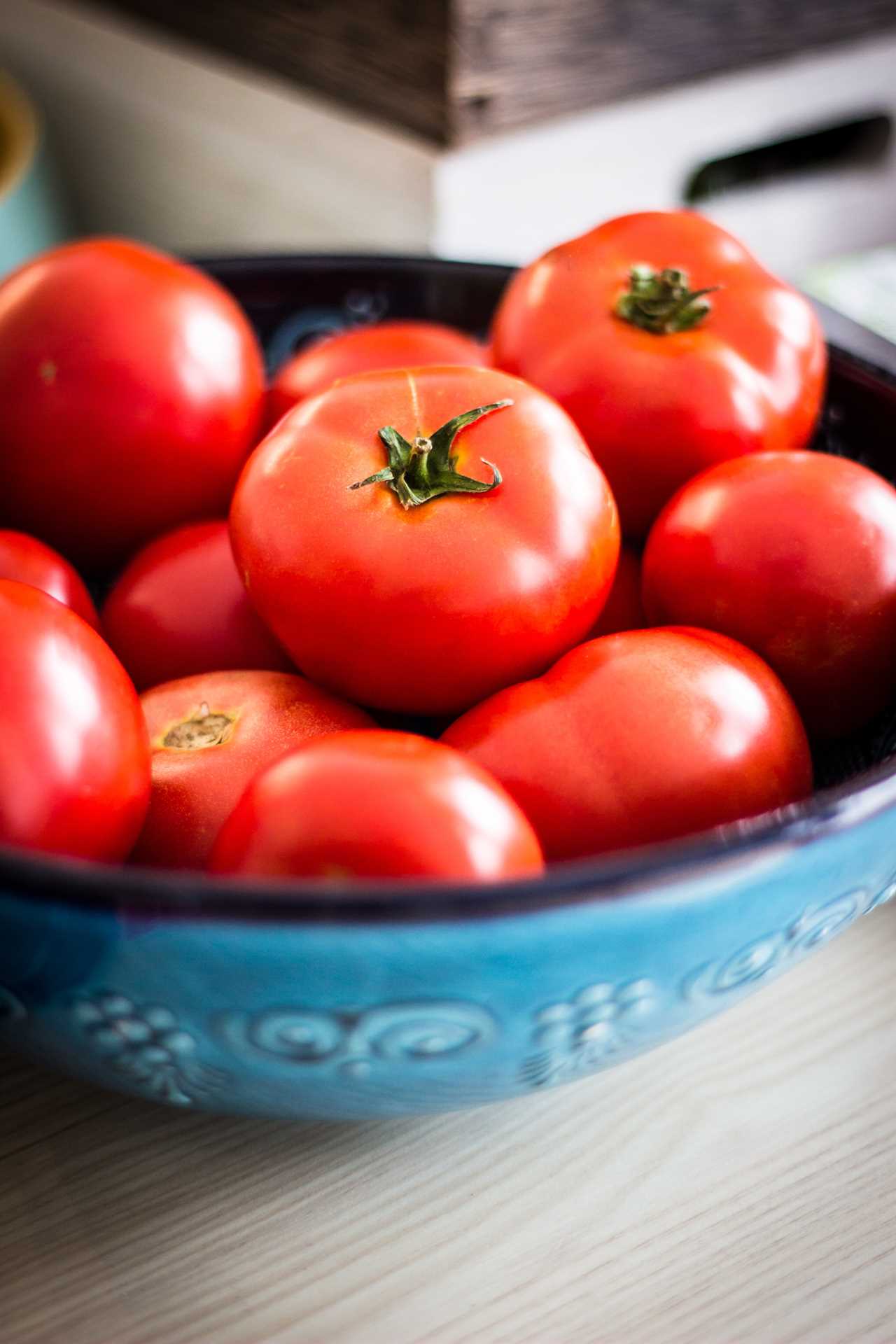
-
Barbecue Sauce: Tangy, sweet, and smoky, this sauce is perfect for creating a barbecue chicken pizza. Made with ketchup, brown sugar, vinegar, and spices, it adds a unique twist to your pizza.
-
Alfredo Sauce: Indulge in a decadent pizza with a creamy Alfredo sauce made with garlic, butter, cream, Parmesan cheese, and a hint of nutmeg. It pairs well with toppings like shrimp, bacon, and broccoli.
Pizza Bianca
Using a base of olive oil, rosemary, and salt, pizza bianca is a popular variation in Rome. This unique style of pizza stands out from its tomato-based counterparts by focusing on the simplicity and quality of its ingredients.
The preparation techniques for pizza bianca are similar to traditional pizza dough, with the key difference being the omission of tomato sauce. Instead, the dough is topped with a generous drizzle of olive oil, a sprinkle of fragrant rosemary, and a pinch of salt.
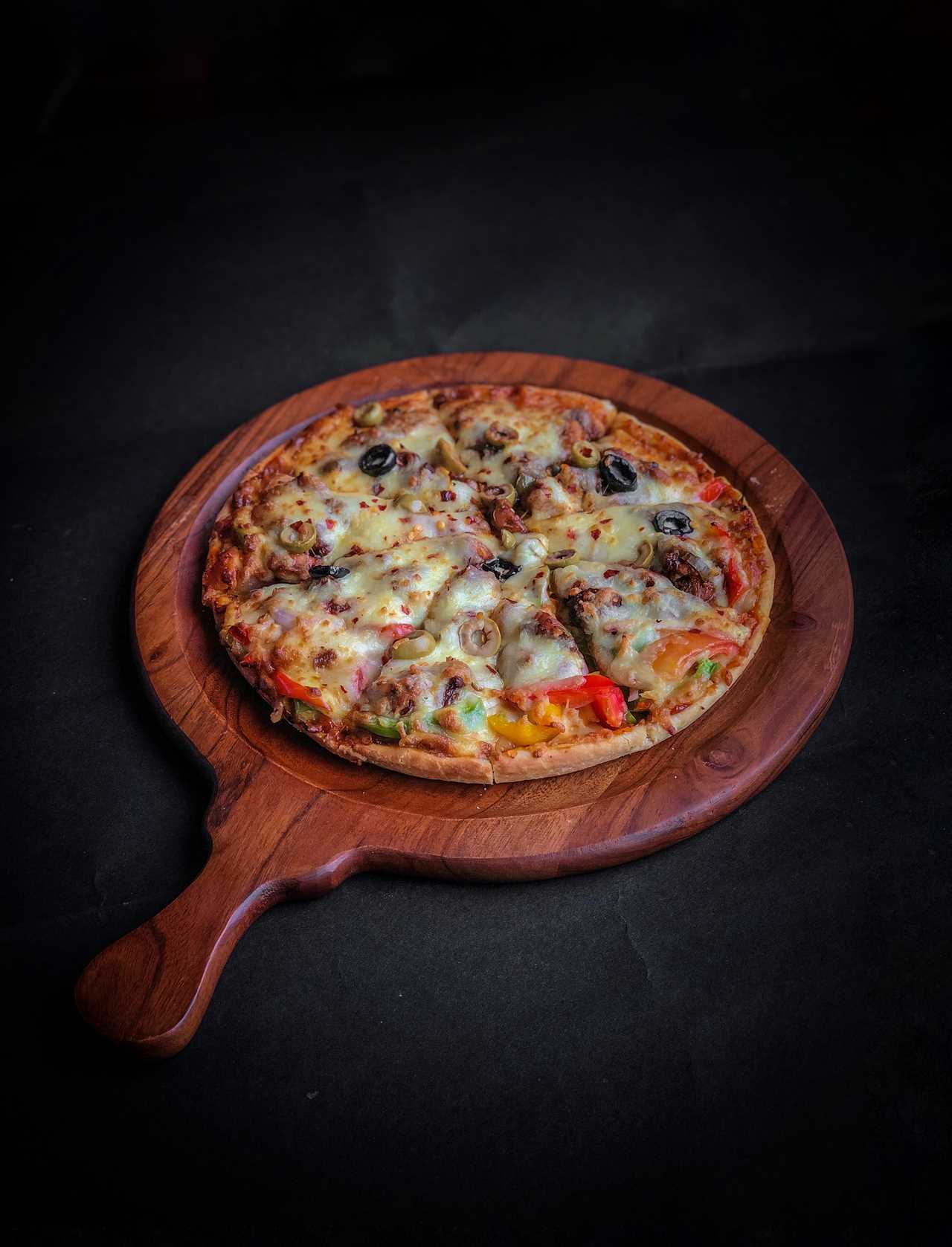
The absence of tomato sauce allows the flavors of the olive oil and rosemary to shine through, creating a truly delightful and satisfying experience. The crust is cooked to perfection, with a crispy exterior and a soft, fluffy interior.
Pizza bianca is a flavor variation that showcases the freedom and creativity that can be found in Italian cuisine.
Pizza Margherita
After pre-cooking the underside of the base slightly, the pizza is baked at 250°C for 10-15 minutes and garnished with fresh basil leaves.
The authentic Italian pizza known as Margherita is a timeless classic that captures the essence of Italy in every bite. It starts with a thin and crispy base, topped with a vibrant tomato sauce made from fresh tomatoes, slices of creamy mozzarella cheese, and a generous sprinkling of fragrant basil.

This traditional combination of flavors is what sets the Margherita pizza apart and makes it a favorite among pizza lovers worldwide. However, there are also variations of the Margherita pizza that add a twist to this classic, such as adding toppings like mushrooms, olives, or even prosciutto.
Whether you prefer to stick to tradition or explore new flavors, the Margherita pizza is a delicious representation of Italian culinary freedom.
Toppings and Variations
To add a twist to the classic Margherita pizza, you can experiment with various toppings and variations. The freedom to get creative with pizza toppings allows for endless possibilities and mouthwatering combinations.
Imagine a pizza topped with smoky bacon, caramelized onions, and tangy blue cheese. Or perhaps a vegetarian option with roasted vegetables, goat cheese, and a drizzle of balsamic glaze.

For those seeking a spicy kick, why not try a pizza with jalapenos, pepperoni, and a sprinkle of crushed red pepper flakes? The options are truly limitless when it comes to customizing your pizza to suit your taste buds and culinary desires.
Baking and Cooking Techniques
The chef expertly manipulates the dough, ensuring an even and crispy crust as it bakes in the hot oven. Baking techniques and cooking methods play a crucial role in achieving the perfect pizza. Here are some key techniques to consider:
- Utilize a preheated oven to ensure a quick and even bake.
- Use a pizza stone or baking steel to create a crisp bottom crust.
- Rotate the pizza halfway through the baking process for even cooking.
- Experiment with different temperatures to achieve the desired level of crispiness.
- Allow the pizza to rest for a few minutes after baking to let the flavors meld together.
By mastering these baking techniques and cooking methods, you can create a pizza that is both authentic and delicious.
Tips for Authentic Italian Flavor
Utilizing fresh, high-quality ingredients is essential in achieving the authentic flavors of Italian cuisine. When it comes to pizza, there are a few tips and tricks that can take your homemade pie to the next level.

First and foremost, start with a well-prepared dough. Making the dough the day before allows for better flavor development. Shape the pizza bases by hand, avoiding a rolling pin, to preserve the aerated texture of the dough.
For a traditional Italian flavor, try making a quick tomato sauce by cooking garlic in extra virgin olive oil and adding tomatoes, salt, and basil. And when it comes to toppings, you can’t go wrong with classic options like the Pizza Margherita, topped with tomato sauce, mozzarella, and fresh basil leaves, or the Pizza Bianca, adorned with olive oil, rosemary, and salt.
These traditional Italian pizza toppings will transport your taste buds to Italy with every bite.
Serving and Enjoying Your Homemade Pizza
Once the homemade pizza is fully baked, it can be sliced and enjoyed with family and friends. To elevate the experience, here are some serving techniques and wine pairings to consider:

- Serve the pizza on a wooden board or pizza stone to retain its warmth and rustic charm.
- Sprinkle some fresh basil leaves over the hot pizza for a burst of fragrance and flavor.
- Drizzle a high-quality extra virgin olive oil over the slices to enhance the richness and mouthfeel.
- For a touch of heat, offer a selection of hot sauces or chili flakes on the side.
- Pair the pizza with a bottle of your favorite red wine, such as a Chianti or a Sangiovese, to complement the robust flavors of the toppings.

